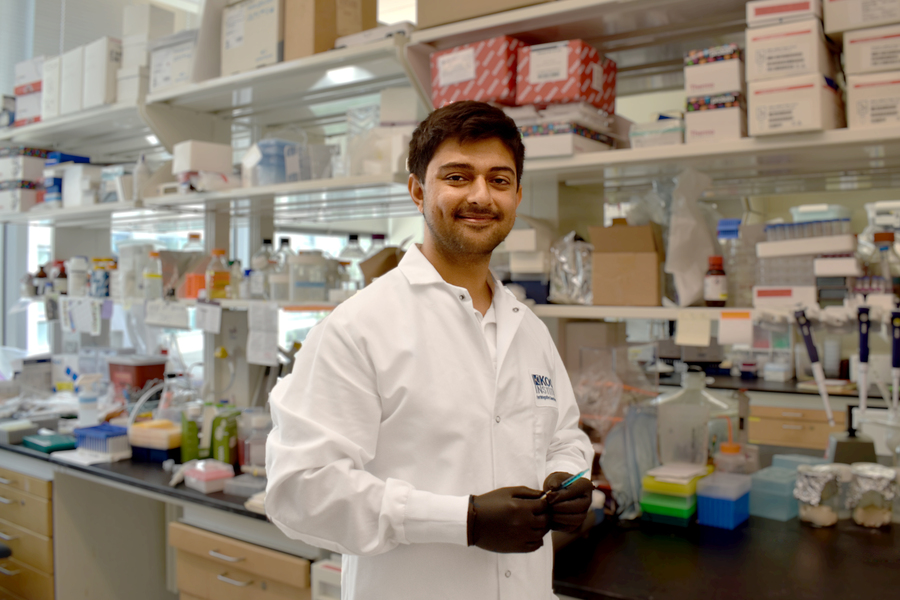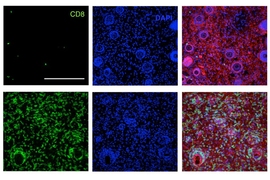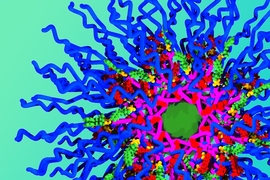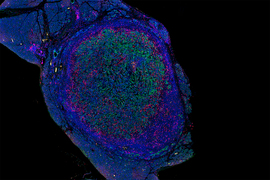Sachin Bhagchandani, a graduate student in the Department of Chemical Engineering currently working at the Koch Institute for Integrative Cancer Research, has won the National Cancer Institute Predoctoral to Postdoctoral Fellow Transition (F99/K00) Award. Bhagchandani is the first student at MIT to receive the award.
The fellowship is given to outstanding graduate students with high potential and interest in becoming independent cancer researchers. Bhagchandani is one of 24 candidates selected for the fellowship this year. Nominations were limited to one student per institution. The award provides six years of funding, which will support Bhagchandani as he completes his PhD in chemical engineering and help him transition into a mentored, cancer-focused postdoctoral research position — one draws on his wide-ranging interests and newfound experiences in synthetic chemistry and immunology.
Making change
Bhagchandani’s research has evolved since his undergraduate days studying chemical engineering at the Indian Institute of Technology, Roorkee. He describes the experience as rigorous, but constraining. While at MIT, he has found more opportunities to explore, leading to highly interdisciplinary projects that allow him to put his training in chemical engineering in service of human health.
Before Bhagchandani arrived at his doctoral project, many pieces had to fall into place. While completing his Master’s thesis, Bhagchandani discovered his interest in the biomedical space while working on a project advised by MIT Institute Professor Robert Langer and Harvard Medical School Professor Jeffrey Karp developing different biomaterials for the sustained delivery of drugs for treating arthritis. As a PhD candidate, he joined the laboratory of chemistry Professor Jeremiah Johnson to learn macromolecular synthesis with a focus on nanomaterials designed for drug delivery. The final piece would fall into place with Bhagchandani’s early forays into immunology — with Darrell Irvine, the Underwood-Prescott Professor of Biological Engineering and Materials Science and Engineering at MIT and Stefani Spranger, the Howard S. (1953) and Linda B. Stern Career Development Professor and assistant professor of biology at MIT.
“When I was exposed to immunology, I learned how relevant the immune system is to our daily life. I found that the biomedical challenges I was working on could be encapsulated by immunology,” Bhagchandani explains. “Drug delivery was my way in, but immunology is my path forward, where I think I will be able to make a contribution to improving human health.”
As a result, his interests have shifted toward cancer immunotherapy — aiming to make these treatments more viable for more patients by making them less toxic. Supported, in part, by the Koch Institute Frontier Research Program, which provides seed funding for high-risk, high-reward/innovative early-stage research, Bhagchandani is focusing on imidazoquinolines, a promising class of drugs that activates the immune system to fight cancer, but can also trigger significant side effects when administered intravenously. In the clinic, topical administration has been shown to minimize these side effects in certain localized cancers, but additional challenges remain for metastatic cancers that have spread throughout the body.
In order to administer imidazoquinolines systemically with minimal toxicity to treat both primary and metastatic tumors, Bhagchandani is adapting a bottlebrush-shaped molecule developed in the Johnson lab to inactivate imidazoquinolines and carry them safely to tumors. Bhagchandani is fine-tuning linking molecules that release as little of the drug as possible while circulating in the blood, and then slowly release the drug once inside the tumor. He is also optimizing the size and architecture of the bottlebrush molecule so that it accumulates in the desired immune cells present in the tumor tissue.
“A lot of students work on interdisciplinary projects as part of a larger team, but Sachin is a one-man crew, able to synthesize new polymers using cutting edge chemistry, characterize these materials, and then test them in animal models of cancer and evaluate their effects on the immune system,” said Irvine. “His knowledge spans polymer chemistry to cancer modeling to immunology.”
Significant figures
Prior to enrolling at MIT, Bhagchandani already had a personal connection to cancer, both through his grandfather, who passed away from prostate cancer, and through working at a children’s hospital in his hometown of Mumbai, spending time with children with cancer. Once on campus, he discovered that working in the biomedical space would allow him to put his skills as a chemical engineer in service of addressing unmet medical needs. In addition, he found that the interdisciplinary nature of the work offered a variety of perspectives on which to build his career.
His doctoral project sits at the nexus of polymer chemistry, drug delivery, and immunology, and requires the collaboration of several laboratories, all members of the Koch Institute for Integrative Cancer Research at MIT. In addition to the Johnson lab, Bhagchandani is working with the Irvine lab for its expertise in immune engineering and the Langer lab for its expertise in drug delivery, and collaborating with the Spranger lab for its expertise in cancer immunology.
“For me, working at the Koch Institute has been one of the most formative experiences of my life, because I've gone from traditional chemical engineering training to being exposed to experts in all these different fields with many different perspectives,” said Bhagchandani. When working from the perspective of chemical engineering alone, Bhagchandani said he could not always find solutions to problems that arose.
“I was making the materials and testing them in mouse models, however I couldn’t understand why my experiments weren’t working,” he says. “But by having scientists and engineers who understand immunology, immune engineering, and drug delivery together in the same room, looking at the problem from different angles, that’s when you get that ‘a-ha’ moment, when a project actually works.”
“It is wonderful having brilliant, interdisciplinary scientists like Sachin in my group,” said Johnson. “He was the first student from the Chemical Engineering department to join my group in the Department of Chemistry for their PhD studies, and his ability to bring new perspectives to our work has been highly impactful. Now, led by Sachin, and through our collaborations with Darrell Irvine, Bob Langer, Stefani Spranger, and many others in the Koch Institute, we are able to translate our chemistry in ways we couldn't have imagined before.”
In his postdoctoral training, Bhagchandani plans to dive deeper into the regulation of the immune system, particularly how different dosing regimens change the body’s response to immunotherapies. Ultimately, he hopes to continue his work as a faculty member leading his own immunology lab — one that focuses on understanding and harnessing early immune responses in cancer therapies.
“I would love to get to a point where I can recreate a lab environment for chemists, engineers, and immunologists to come together and interact and work on interdisciplinary problems. For cancer especially, you need to attack the problem on all different fronts.”
As well as advancing his work in the biomedical space, Bhagchandani hopes to serve as a mentor for future students figuring out their own paths.
“I feel like a lot of people at MIT, myself included, face challenges throughout their PhD where they start to lose belief: 'Am I the right person, am I good enough for this?' Having overcome a lot of challenging times when the project wasn't working as we hoped it would, I think it is important to share these experiences with young trainees to empower them to pursue careers in research. Winning this award helps me look back at those challenges, and persevere, and know, yes, I’m still on the right path. Because I genuinely felt that this is what I want to do with my life and I've always felt really passionate coming in to work, that this is where I belong.”










